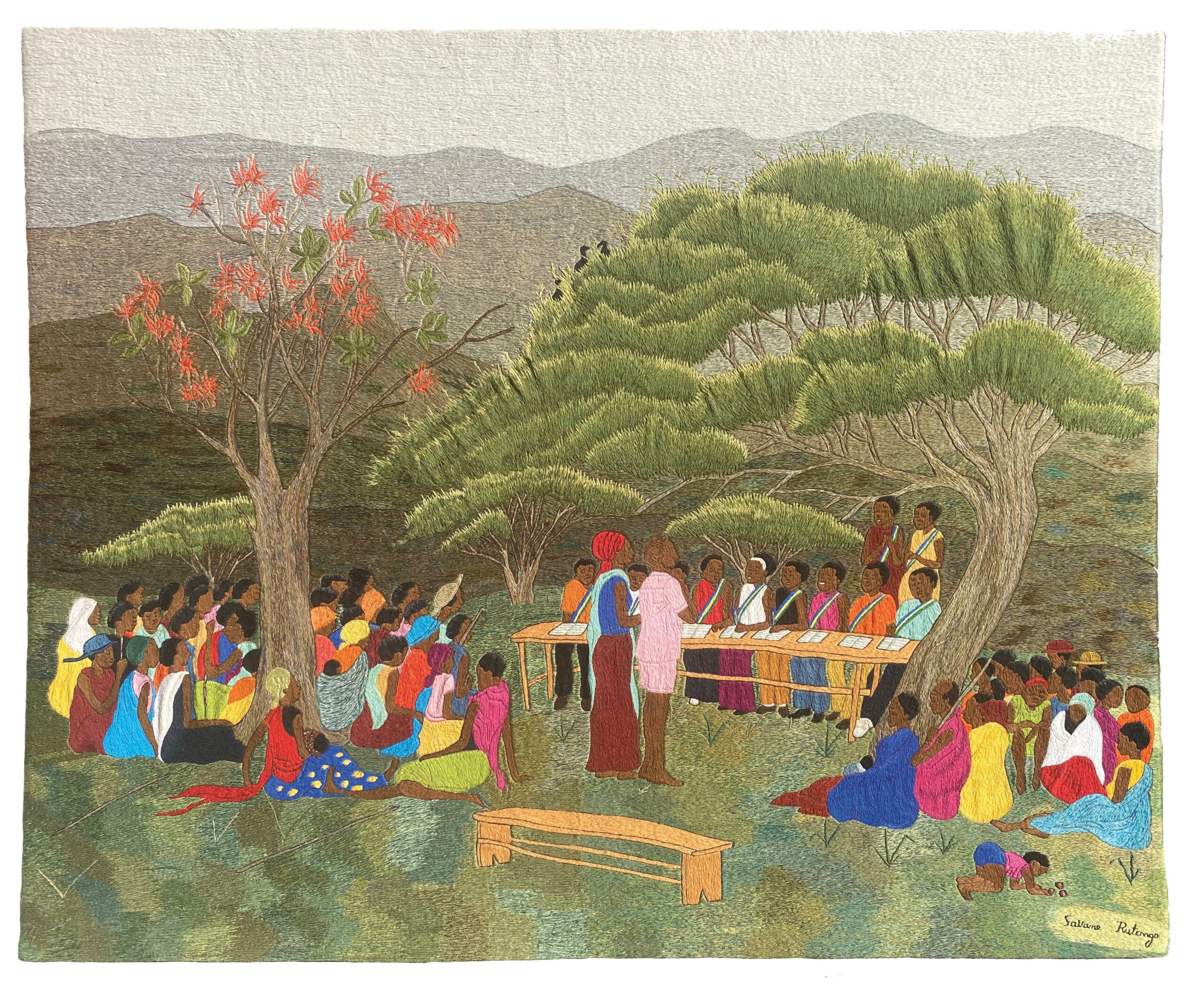A Rwandan village stitches together healing through embroidery
by Ky Huynh
 Kathleen Malu served as a Peace Corps Volunteer in Rwanda in 1980. Thirty years later, in 2010, she returned as a Fulbright Scholar to a very different country.
Kathleen Malu served as a Peace Corps Volunteer in Rwanda in 1980. Thirty years later, in 2010, she returned as a Fulbright Scholar to a very different country.
In the intervening years, the horrors of the Rwandan genocide had shocked the world. In 1994, over the course of 100 days, it is estimated that close to one million Tutsi were massacred by Hutus.
During her second stay in Rwanda, Malu met Christiane Rwagatare and a group of women using art to preserve tableaus of ordinary Rwandan life, as well as scenes of reconciliation and restoration.
The intricate tapestry featured here depicts a Gacaca court, after which the piece was titled. “Gacaca” is the name of the traditional Rwandan community court system, in which grievances were brought before the village. The 1994 genocide sparked a resurgence of these traditional courts in order to address the sheer number of perpetrators who needed to be brought to justice.
In the tapestry, the judges sit at the long table and wear sashes in the colors of Rwanda’s flag (yellow, blue, and green). The prisoner (dressed in pink) stands accused of acts of genocide. The entire village seems to be in attendance, including a child playing a game in the bottom right corner.
More than just a symbol of healing, the Gacaca tapestry itself served as a means and method of reconciliation. The women who painstakingly stitched each thread through the fabric have family members who fought against one another during the civil war. Survivors and relatives of the perpetrators now live and work side by side.
Malu decided to donate the piece to the Museum of the Peace Corps Experience at this time because she believes it deserves a wider audience. She writes that the work of the Savane Rutongo group “represents the convergence of art, political upheaval, reconstruction, reconciliation, and peace efforts taking place in Rwanda.”
For further information about Savane Rutongo, please contact Kathleen F. Malu at [email protected].
To donate an item or share a story, go to museumofthepeacecorpsexperience.org, click on “Objects” or “Stories,” and follow the directions for submission.
